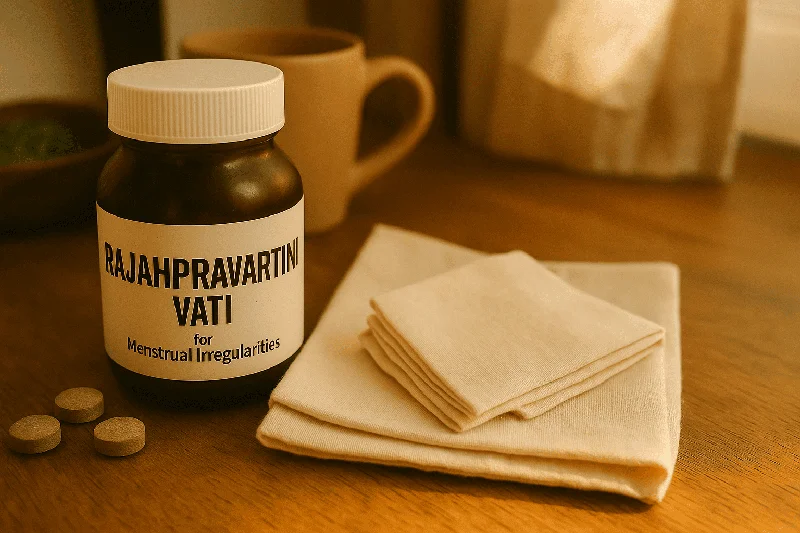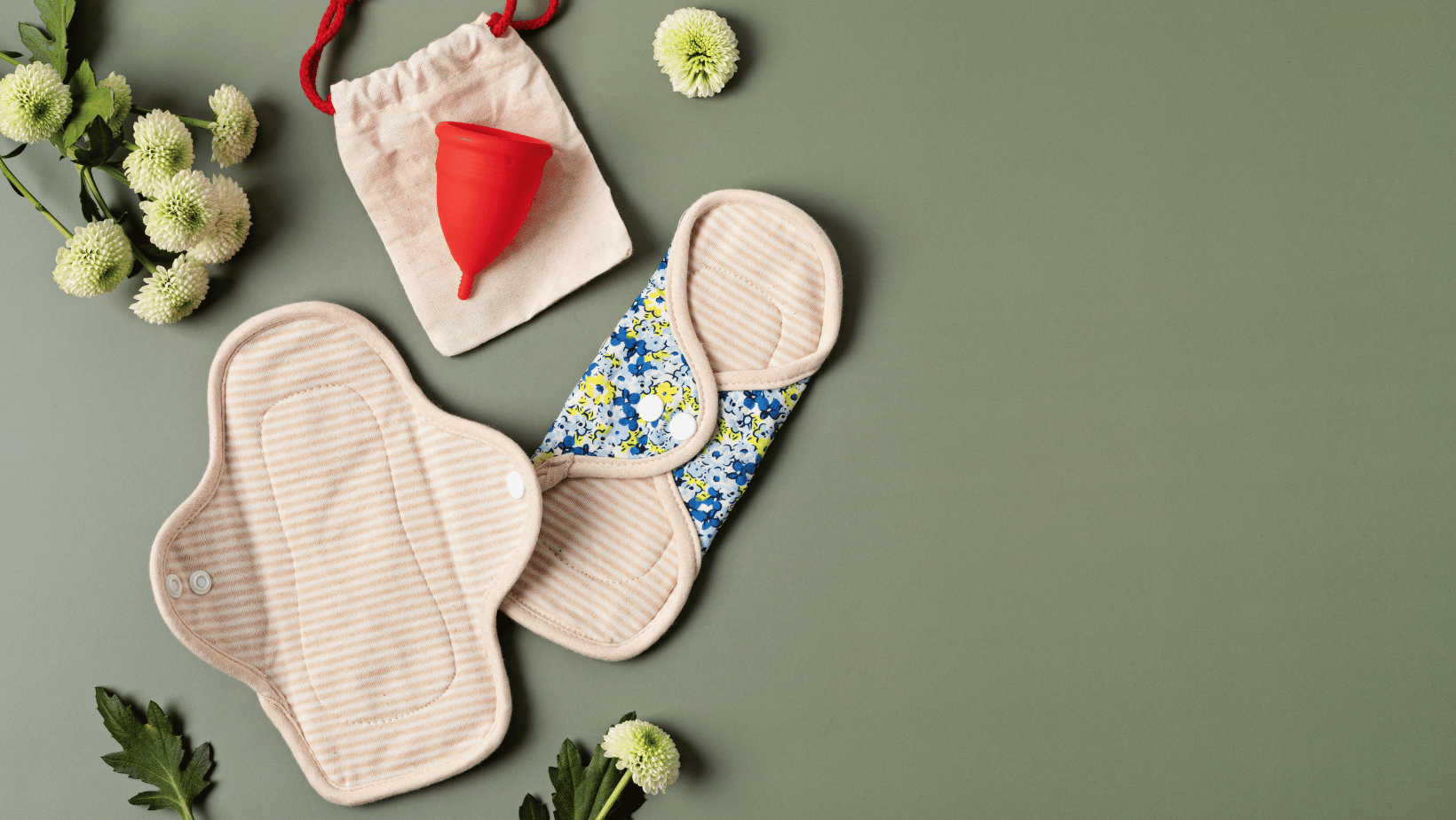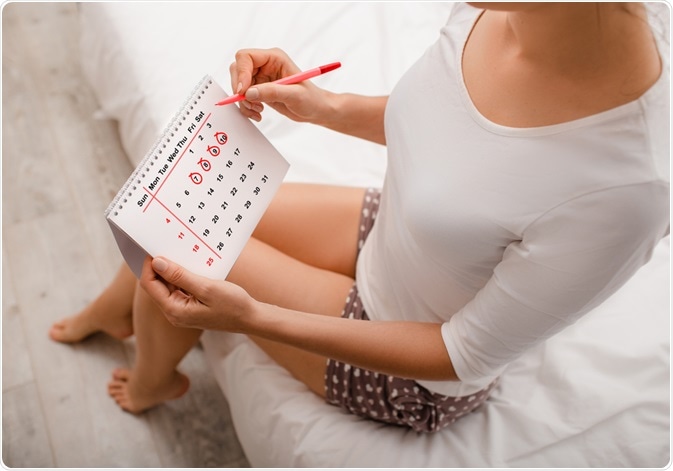Ask Ayurvedic doctor a question and get a consultation online on the problem of your concern in a free or paid mode. More than 2,000 experienced doctors work and wait for your questions on our site and help users to solve their health problems every day.
Shop Now in Our Store
Rajahpravartini Vati and Menstrual Irregularities: An Ayurvedic Perspective

Rajahpravartini Vati is traditionally used in Ayurveda to stimulate and regulate the menstrual cycle. However, some users have experienced an absence of period (amenorrhea) while using it. This paradoxical response can be concerning, and understanding the potential reasons behind it requires a closer look at both the formulation’s actions and individual body constitutions.
Understanding Rajahpravartini Vati in Ayurveda
Rajahpravartini Vati is a potent herbal formulation in Ayurveda traditionally used to stimulate and regulate the menstrual cycle. Its very name implies "that which initiates menstruation." Ayurvedic practitioners have long relied on this formulation to address conditions such as scanty or delayed periods. The formulation is typically composed of a blend of herbs and minerals known for their ability to:
- Stimulate Uterine Function: By activating the reproductive system.
- Balance Doshas: Particularly targeting imbalances in Pitta (heat and inflammation) and Vata (irregularity).
- Enhance Ojas: The essence of vitality and immunity, which is crucial for maintaining regular cycles.
According to classical texts like the Charaka Samhita and Sushruta Samhita, maintaining a balanced Agni (digestive fire) and robust Ojas is essential for normal menstrual function. When these elements are out of balance, menstrual irregularities, including amenorrhea (absence of periods), can occur.
 Ayurvedic Perspective on Menstrual Regulation
Ayurvedic Perspective on Menstrual Regulation
In Ayurveda, menstruation is not merely a biological function but a reflection of overall health and balance. Key concepts include:
-
Dosha Balance:
- Pitta Dosha: Governs metabolism and transformation. Excess Pitta can lead to inflammation and hyperactivity, but its suppression can also halt menstrual flow.
- Vata Dosha: Responsible for movement and regulation. Imbalances here may result in irregular or absent cycles.
-
Agni and Ama:
- A strong digestive fire (Agni) ensures proper assimilation of nutrients and elimination of toxins (Ama).
- When Agni is weak, Ama accumulates, which can disrupt hormonal pathways and reproductive health.
-
Ojas:
- Considered the essence of vitality, Ojas is crucial for immune function and reproductive health. A depletion of Ojas can manifest as menstrual irregularities.
Rajahpravartini Vati is designed to stimulate uterine activity and balance the doshas. However, when its potent effects are not in harmony with an individual's unique constitution (Prakriti) or current dosha imbalance, it might inadvertently lead to an absence of period.
Possible Reasons Why Rajahpravartini Vati May Cause No Period
When addressing the question, rajahpravartini vati cause no period why, several factors may contribute to this seemingly contradictory outcome. Here are the most common explanations:
1. Dosage and Potency Issues
- Excessive Stimulation:
Rajahpravartini Vati is known for its strong stimulatory effects on the reproductive system. An excessive dose may lead to overstimulation, which can paradoxically suppress the natural menstrual cycle as the body attempts to recalibrate. - Individual Sensitivity:
Every individual has a unique constitution. What is therapeutic for one person might be too potent for another. High sensitivity in some women can result in a temporary halt in menstruation due to an imbalance caused by overdosage.
2. Underlying Hormonal or Dosha Imbalances
- Preexisting Hormonal Imbalances:
If there are existing imbalances in hormones or doshas—especially if Pitta or Vata is significantly out of balance—the strong action of Rajahpravartini Vati might exacerbate these issues rather than correct them. - Compensatory Mechanisms:
The body sometimes responds to potent stimulants by temporarily shutting down certain functions. In this case, the suppression of the menstrual cycle could be a compensatory mechanism in response to an abrupt increase in stimulation.
3. Duration of Use and Adaptation
- Adjustment Phase:
When starting Rajahpravartini Vati, the body may need time to adjust. During this adaptation phase, menstrual cycles might become irregular or even temporarily absent. - Lack of Supportive Therapies:
Ayurvedic treatment is most effective when used as part of a holistic regimen that includes dietary modifications, lifestyle changes, and complementary herbal support. Without these, the potent effects of Rajahpravartini Vati might not be properly balanced, leading to unintended outcomes such as amenorrhea.
4. Lifestyle and Dietary Factors
- Improper Diet:
An imbalanced diet that further weakens Agni (digestive fire) can contribute to the accumulation of Ama (toxins), compounding the effect of Rajahpravartini Vati and potentially disrupting menstrual regularity. - Stress and Lifestyle:
Chronic stress, inadequate sleep, and a sedentary lifestyle can all negatively impact hormonal balance, making the body more susceptible to the potent effects of Rajahpravartini Vati.
Integrating Modern Scientific Research
Modern research is beginning to explore the intersection of traditional Ayurvedic practices and contemporary medicine. Although studies specifically on Rajahpravartini Vati are limited, research on related herbal formulations and their effects on reproductive health provides some insights:
- Hormonal Regulation:
Studies published in journals such as the Journal of Ethnopharmacology have shown that certain Ayurvedic herbs can influence hormonal pathways. These studies support the idea that potent formulations might disrupt hormonal balance if not dosed appropriately. - Anti-Inflammatory and Immunomodulatory Effects:
Research indicates that many Ayurvedic herbs have anti-inflammatory properties, which can affect the hypothalamic-pituitary-ovarian axis—a key regulator of menstruation. While these effects are beneficial in many contexts, excessive stimulation might temporarily interfere with normal menstrual function. - Individual Variability:
Modern research underscores the importance of personalized medicine. Just as genetic and environmental factors influence drug metabolism in modern pharmacology, an individual's Ayurvedic Prakriti plays a crucial role in how they respond to herbal treatments like Rajahpravartini Vati.
Practical Guidelines for Managing Menstrual Irregularities with Rajahpravartini Vati
If you experience an absence of period while using Rajahpravartini Vati, here are some actionable steps you can take:
Consult a Qualified Ayurvedic Practitioner
- Personalized Assessment:
Seek professional advice to evaluate your unique dosha balance and overall constitution. A qualified practitioner can adjust the dosage or suggest complementary therapies to help restore your menstrual cycle. - Review of Current Regimen:
Your practitioner may recommend modifying the treatment plan to better align with your body’s needs, including integrating supportive herbs or dietary changes.
Adjust Dosage and Duration
- Tapering the Dose:
Consider a lower dose if you suspect that the current dosage is too potent for your body. Gradually adjusting the dose can help your body adapt without overwhelming its regulatory mechanisms. - Monitoring Your Response:
Keep a journal of your menstrual cycle and any accompanying symptoms. This information will be valuable in fine-tuning your treatment plan.
Complementary Lifestyle and Dietary Changes
- Optimize Your Diet:
- Consume warm, easily digestible foods to support Agni (digestive fire).
- Include digestive spices like ginger, cumin, and coriander in your meals.
- Avoid overly processed or cold foods that may further weaken your digestion.
- Stress Management:
- Incorporate relaxation techniques such as yoga, meditation, or deep breathing exercises.
- Ensure you get adequate sleep to help regulate hormonal balance.
- Regular Exercise:
- Engage in moderate physical activities like walking or gentle yoga to improve overall circulation and support hormonal health.
Frequently Asked Questions (FAQ)
Q: What is Rajahpravartini Vati used for in Ayurveda?
A: Rajahpravartini Vati is traditionally used to stimulate and regulate menstrual cycles. It is designed to activate uterine function and balance reproductive health by harmonizing doshas.
Q: Why might Rajahpravartini Vati cause no period in some cases?
A: The absence of period, or amenorrhea, can occur due to several factors including an excessive dosage, individual sensitivity, underlying hormonal or dosha imbalances, and the body’s adaptation phase to the potent formulation.
Q: Can I adjust the dosage of Rajahpravartini Vati on my own?
A: No, it is essential to consult with a qualified Ayurvedic practitioner before making any changes to the dosage. Personalized guidance is crucial to ensure safe and effective treatment.
Q: What complementary therapies can help restore normal menstruation?
A: Supportive measures include dietary adjustments to enhance Agni, stress management techniques such as yoga and meditation, and incorporating digestive spices and supportive herbs like Triphala or ashwagandha into your regimen.
Q: How long does it take to see normal menstrual cycles restored?
A: The time frame can vary depending on individual body constitution and the severity of the imbalance. Some individuals may notice improvements within a few menstrual cycles, while others may require a longer adjustment period.
Conclusion and Call to Action
In summary, the query rajahpravartini vati cause no period why highlights a complex interaction between a potent Ayurvedic formulation and the body’s delicate hormonal balance. Rajahpravartini Vati is designed to stimulate menstrual function, yet if used in excess or without proper individualization, it may lead to temporary suppression of the menstrual cycle. By understanding the Ayurvedic principles of dosha balance, Agni, and Ojas—and integrating modern scientific insights—we can appreciate the need for personalized treatment plans in managing reproductive health.
If you are experiencing menstrual irregularities while using Rajahpravartini Vati, we strongly recommend consulting a qualified Ayurvedic practitioner who can assess your unique needs and adjust your treatment plan accordingly. Share this article with others who may be seeking natural solutions for menstrual health, subscribe to our newsletter for more holistic insights, and leave your comments or questions below. Embrace the wisdom of Ayurveda by taking a proactive step toward a balanced and healthy reproductive system.
Disclaimer: The information provided in this article is for educational purposes only and should not be considered medical advice. Always consult a qualified healthcare provider or Ayurvedic practitioner regarding any health or medical concerns.
This article is checked by the current qualified Dr. Harsha Joy and can be considered a reliable source of information for users of the site.



